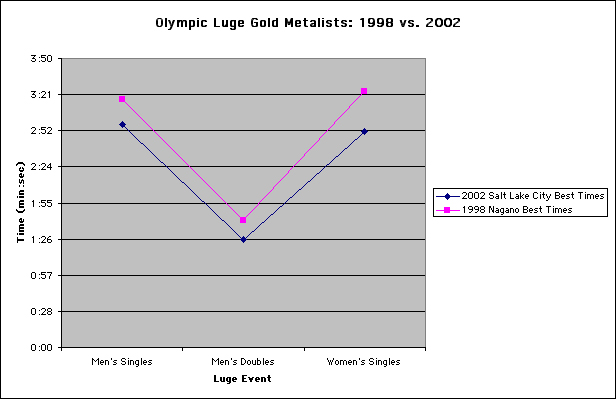| 800 AD | Earliest evidence of sled use by the Vikings | |
| 1883 | First International Luge Race | |
| 1954 | Luge Selected as an International Sport | |
| 1957 | International Luge Federation is Founded | |
| 1964 | First Olympic Luge Competition |
| 2002: Salt Lake City, United
States Men's Singles
Men's Doubles
Women's Singles
(info from http://sports.espn.go.com/oly/winter02/medaltracker/byEvent?sportId=l ) |
1998: Nagano, Japan Men's Singles
Men's Doubles
Women's Singles
(info from http://www.luge.com/results/kb_97-98/ol98.htm ) |
